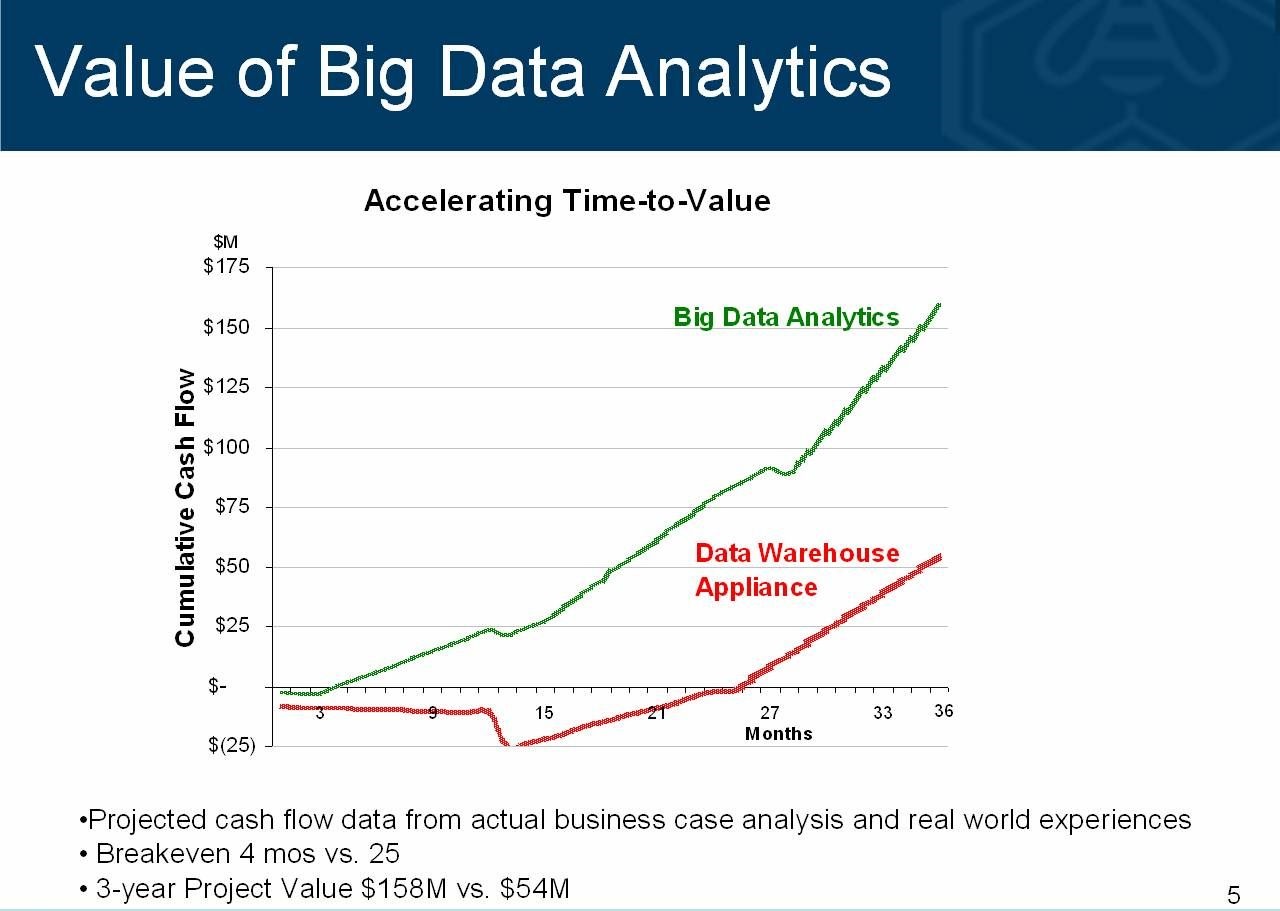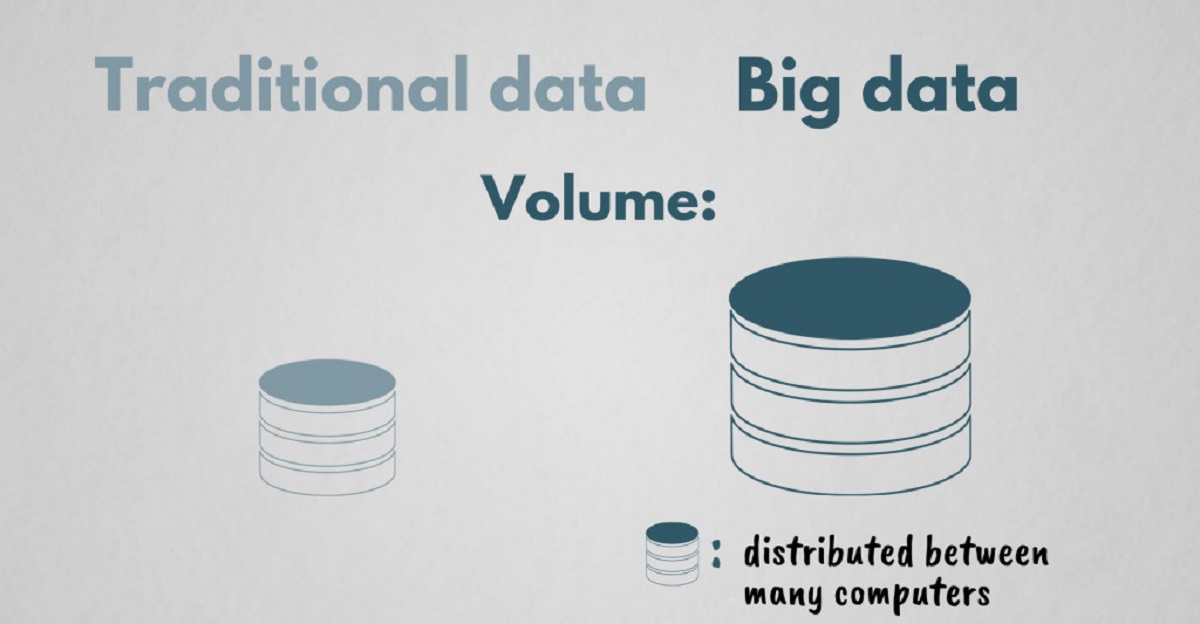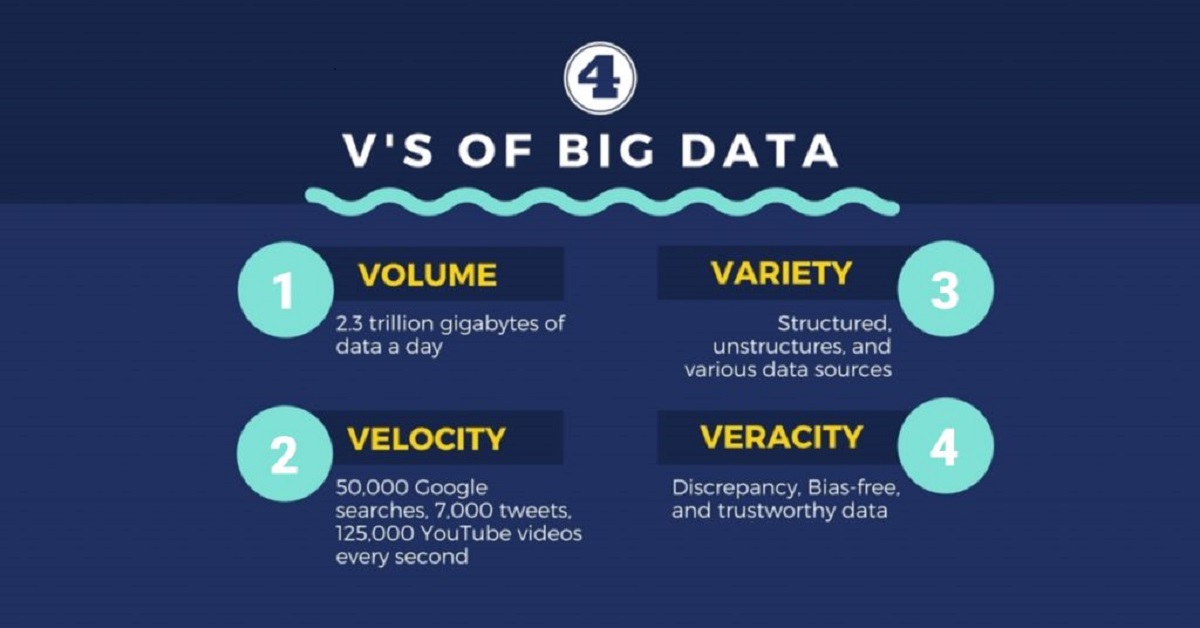Introduction
Big Data has become a buzzword in today’s digital era. With the exponential growth of data in various industries, there is an increasing need to understand and harness the potential of big data for business success. Big Data refers to the large and complex datasets that cannot be effectively managed, analyzed, and processed using traditional data processing tools and techniques.
Businesses, organizations, and even individuals generate a colossal amount of data every second. This data comes from a wide variety of sources such as social media, sensors, mobile devices, and online transactions. The sheer volume, velocity, and variety of this data make it challenging to store, manage, process, and analyze with conventional methods.
The concept of Big Data is shaped by several attributes that distinguish it from traditional data. These attributes include the volume, velocity, variety, veracity, and value of the data. Each of these attributes plays a critical role in understanding the unique characteristics and challenges associated with Big Data.
Definition of Big Data
Big Data refers to the massive volume of structured and unstructured data that is generated from various sources and requires advanced tools and techniques for storage, processing, and analysis. It encompasses the three Vs – volume, velocity, and variety – which define the unique nature of this data.
The volume of Big Data refers to the massive scale of data that is generated every second. From social media posts, website clicks, and sensor readings to transaction records and customer data, the amount of data generated is enormous. Traditional data processing systems struggle to handle such large volumes of data efficiently, which requires the use of specialized tools and technologies.
The velocity of Big Data refers to the speed at which data is generated and needs to be processed for real-time insights. With the proliferation of IoT devices, data is continuously streaming from various sources, and businesses need to analyze this data in real-time to make informed decisions and take immediate actions. Handling such high velocity data requires high-performance processing systems.
The variety of Big Data refers to the different types and formats of data that are generated in today’s digital landscape. Structured data, such as databases and spreadsheets, are just a portion of the overall data generated. Unstructured data, such as social media posts, images, and videos, also play a significant role. Analyzing and deriving insights from such diverse data sources requires advanced techniques like natural language processing, image recognition, and sentiment analysis.
In addition to the three Vs, Big Data also involves the concept of veracity, which refers to the trustworthiness and reliability of the data. With such vast amounts of data being generated, it is crucial to ensure data quality, accuracy, and consistency. Data cleaning and validation processes are required to handle the veracity challenges associated with Big Data.
Overall, the definition of Big Data revolves around the massive volume, high velocity, diverse variety, and veracity challenges that businesses and organizations face when dealing with this data. It requires advanced technologies, such as distributed computing frameworks and data analytics tools, to extract meaningful insights and drive innovation in various industries.
Attributes of Big Data
Big Data is characterized by several attributes that set it apart from traditional data. These attributes define the unique nature of Big Data and pose both challenges and opportunities for businesses and organizations.
- Volume: The volume of Big Data refers to the massive amount of data generated and collected from various sources. It includes structured data, such as databases and spreadsheets, as well as unstructured data, such as social media posts, emails, images, and videos. The sheer volume of data makes it challenging to store, manage, process, and analyze using traditional methods.
- Velocity: The velocity of Big Data refers to the speed at which data is generated and needs to be processed. With the advancement of technology and the proliferation of IoT devices, data is continuously streaming in real-time. Businesses and organizations need to analyze this data on the fly to gain insights and make informed decisions promptly. The high velocity of data requires scalable and high-performance processing systems.
- Variety: The variety of Big Data refers to the diverse types and formats of data that are generated. It includes structured data, semi-structured data, and unstructured data. Structured data can be easily organized and stored in traditional databases, while semi-structured and unstructured data, such as social media posts, sensor data, and multimedia content, pose challenges due to their complexity and varying formats. Analyzing and extracting insights from diverse data sources require advanced techniques like natural language processing, machine learning, and image recognition.
- Veracity: Veracity refers to the quality, reliability, and trustworthiness of the data. Big Data is often characterized by data inconsistencies, errors, and noise. Ensuring data veracity requires data cleansing, normalization, and validation processes to eliminate inaccuracies and maintain data integrity. Without addressing veracity challenges, the insights derived from Big Data may be compromised and lead to flawed decisions.
- Value: The value of Big Data lies in its potential to provide meaningful insights and create value for businesses and organizations. By analyzing large volumes of data, patterns, trends, and correlations can be identified, enabling companies to make data-driven decisions, improve operations, enhance customer experiences, and drive innovation. However, extracting value from Big Data requires the right tools, expertise, and strategies.
These attributes collectively define the nature of Big Data and highlight the challenges and opportunities it presents. Understanding and effectively managing these attributes is crucial for organizations looking to leverage the power of Big Data in various fields, including marketing, healthcare, finance, and logistics. By harnessing the volume, velocity, variety, veracity, and value of Big Data, businesses can gain a competitive edge and unlock new opportunities for growth and success.
Attribute: Exponential Data Growth Rate
One of the key attributes of Big Data is the exponential data growth rate. This attribute highlights the unprecedented rate at which data is being generated and accumulated in today’s digital age.
Advancements in technology, coupled with the rise of the internet, social media, and connected devices, have fueled the exponential growth of data. Every interaction, transaction, and action taken online or through digital platforms generates a trail of data. With the increasing adoption of smartphones, IoT devices, and cloud computing, the amount of data being generated is growing at an astonishing pace.
The exponential data growth rate can be attributed to several factors:
- Increased connectivity: The widespread availability of high-speed internet and the growth of mobile technology have connected billions of people worldwide. This has led to an explosion in online activities, such as social media usage, online shopping, and digital entertainment, resulting in a massive amount of data being generated.
- Sensor technology: The proliferation of sensors in various devices, infrastructure, and machinery has contributed to the exponential data growth rate. Sensors in smartphones, wearables, vehicles, and industrial equipment capture data about location, movement, temperature, humidity, and other parameters. This data provides valuable insights for optimizing processes, improving safety, and enhancing user experiences.
- Machine-generated data: The rise of automation and artificial intelligence has led to an increase in machine-generated data. Autonomous systems, intelligent algorithms, and robots generate data as they perform tasks, make decisions, and interact with their environment. This data helps organizations uncover patterns, predict outcomes, and optimize their operations.
- Internet of Things (IoT): The IoT ecosystem, consisting of interconnected devices and sensors, has significantly contributed to the exponential data growth rate. From smart homes and cities to industrial machinery and healthcare devices, IoT devices generate vast amounts of data in real-time. This data enables businesses to monitor and control processes, improve efficiency, and enhance customer experiences.
The exponential data growth rate presents businesses and organizations with both challenges and opportunities. On one hand, managing and storing such massive volumes of data requires scalable infrastructure and robust data management systems. On the other hand, the availability of abundant data provides organizations with a wealth of information that can be leveraged for insights, innovation, and competitive advantage.
To address the exponential data growth rate, businesses need to invest in technologies and strategies that enable efficient data storage, processing, and analysis. This includes implementing cloud-based solutions, adopting scalable data architectures, and leveraging advanced analytics and machine learning techniques to derive actionable insights from the data.
In summary, the attribute of exponential data growth rate emphasizes the rapid pace at which data is being generated in today’s digital world. Understanding and effectively managing this growth is crucial for organizations looking to harness the power of Big Data and unlock its full potential for business success.
Impact of Exponential Data Growth Rate
The exponential data growth rate has far-reaching implications across various sectors and industries. The sheer volume of data being generated and accumulated has a significant impact on businesses, organizations, and society as a whole.
1. Data Storage and Infrastructure: The exponential data growth rate places immense pressure on data storage infrastructure. Traditional storage solutions often struggle to keep up with the demand, leading to the need for scalable and cost-effective storage options. Cloud computing and distributed storage systems have emerged as viable solutions to address the storage challenges posed by the exponential data growth rate.
2. Data Management and Processing: With more data being generated, organizations face the challenge of effectively managing and processing this data. Traditional data management and processing systems may struggle to handle the scale, velocity, and variety of Big Data. As a result, organizations need to adopt advanced technologies and techniques, such as big data platforms, data lakes, and distributed computing frameworks, to efficiently analyze and derive insights from the data.
3. Data Privacy and Security: The exponential data growth rate brings forth concerns regarding data privacy and security. With the vast amount of data being collected, organizations must ensure that sensitive information is protected and that appropriate security measures are in place to prevent unauthorized access and data breaches. Stricter regulations, such as the General Data Protection Regulation (GDPR), have been implemented to address these concerns and protect individuals’ data rights.
4. Business Insights and Decision-making: The exponential data growth rate provides organizations with an abundance of data that can be leveraged to gain valuable insights and make informed decisions. Analyzing large and diverse datasets can reveal patterns, trends, and correlations that were previously unseen. By harnessing this data, businesses can enhance their decision-making processes, optimize operations, and improve customer experiences.
5. Innovation and Market Competitiveness: The exponential data growth rate fuels innovation and drives market competitiveness. By leveraging the power of Big Data, organizations can uncover new opportunities, develop innovative products and services, and gain a competitive advantage. Data-driven insights enable businesses to stay ahead of the competition, identify customer needs, and adapt to changing market trends.
6. Social and Economic Impact: The exponential data growth rate has implications beyond the business realm. It has the potential to drive social and economic growth. Big Data analytics can help in areas such as healthcare, urban planning, transportation, and environmental conservation. By leveraging the vast amounts of data available, governments and organizations can make data-driven decisions to improve public services, optimize resource allocation, and address societal challenges.
Overall, the exponential data growth rate has transformative effects across industries, driving the need for advanced technologies, skilled professionals, and robust data management practices. Organizations that effectively harness and leverage Big Data have the potential to gain significant advantages, while those who fail to adapt may face challenges in remaining competitive in the rapidly evolving digital landscape.
Challenges and Opportunities of Exponential Data Growth Rate
The exponential data growth rate presents both challenges and opportunities for businesses and organizations. While it offers immense potential for innovation and growth, it also introduces complexities and hurdles that need to be addressed. Understanding these challenges and opportunities is crucial for effectively harnessing the power of Big Data.
Challenges:
- Data Management: The sheer volume, velocity, and variety of data pose challenges in effectively managing and organizing the data. Organizations must invest in robust data management systems, data governance frameworks, and data quality assurance processes to ensure data integrity and accessibility.
- Data Security and Privacy: As the amount of data being generated and stored increases, the risk of data breaches and privacy violations also escalates. Organizations need to implement robust security measures, comply with data protection regulations, and ensure ethical data handling practices to maintain trust and protect sensitive information.
- Data Analytics: Extracting meaningful insights from large and diverse datasets requires advanced analytics capabilities and skilled data scientists. Organizations must invest in talent and tools to effectively analyze and derive actionable insights from Big Data.
- Infrastructure and Storage: The exponential data growth rate demands scalable and efficient infrastructure for storage and processing. Cloud computing, distributed storage systems, and high-performance computing can help address the challenges associated with handling and processing large volumes of data.
- Data Integration and Interoperability: Integrating and harmonizing data from diverse sources can be complex, especially when dealing with different formats and structures. Organizations need to develop strategies for data integration and ensure interoperability across various systems to derive a holistic view of the data.
Opportunities:
- Informed Decision-making: The exponential data growth rate provides organizations with a wealth of information to make data-driven decisions. By analyzing vast amounts of structured and unstructured data, businesses can gain insights, identify patterns, and predict trends, empowering them to make informed decisions and drive strategic initiatives.
- Enhanced Customer Experience: Big Data analytics enables organizations to understand customer preferences, behaviors, and needs at a granular level. This data-driven understanding allows businesses to tailor products, services, and marketing efforts to deliver personalized experiences and meet customer expectations.
- Product and Service Innovation: Big Data opens up opportunities for innovation by uncovering insights that were previously inaccessible. By analyzing customer feedback, market trends, and usage patterns, businesses can identify new product and service offerings, optimize existing offerings, and create competitive advantages in the market.
- Operational Optimization: Data analytics can help organizations optimize operations and improve efficiency. By analyzing data from various parts of the business, organizations can identify bottlenecks, streamline processes, reduce costs, and enhance productivity.
- Data-driven Research and Development: The exponentially growing data provides a vast resource for research and development. Scientists and researchers can leverage Big Data to gain insights, conduct experiments, and drive innovation in fields such as healthcare, environmental conservation, and social sciences.
While the challenges posed by the exponential data growth rate cannot be ignored, organizations that effectively address these challenges and capitalize on the opportunities presented by Big Data can gain a competitive edge, drive innovation, and unlock new avenues for growth and success.
Conclusion
The exponential data growth rate has revolutionized the way businesses and organizations operate in the digital era. Understanding and harnessing the power of Big Data has become crucial for driving innovation, making informed decisions, and staying competitive in today’s data-driven world.
Big Data is characterized by several attributes, including the volume, velocity, variety, veracity, and value of the data. The exponential data growth rate, in particular, highlights the unprecedented rate at which data is being generated and accumulated. This attribute presents both challenges and opportunities for organizations across various industries.
The challenges include effectively managing and processing large volumes of data, ensuring data security and privacy, and developing robust data management and analytics capabilities. Organizations must invest in scalable infrastructure, implement data governance frameworks, and comply with data protection regulations to address these challenges.
However, the exponential data growth rate also brings forth numerous opportunities. It enables businesses to make data-driven decisions, enhance customer experiences, drive product innovation, optimize operations, and fuel research and development. By leveraging the potential of Big Data analytics, organizations can gain actionable insights, identify trends, and unlock new avenues for growth and success.
To effectively navigate the challenges and capitalize on the opportunities, organizations need to invest in advanced technologies, develop data-driven strategies, and cultivate a culture of data literacy. Skilled data scientists, data analysts, and IT professionals play a crucial role in extracting meaningful insights from Big Data and applying them to drive business outcomes.
In conclusion, the exponential data growth rate is transforming the business landscape. Organizations that embrace the attributes of Big Data, including the exponential data growth rate, are well-positioned to gain a competitive advantage, drive innovation, and shape the future of their industries. By harnessing the power of Big Data, organizations can unlock new possibilities, create value, and make data-driven decisions that propel them towards success in today’s data-centric world.

























